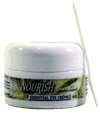You already know what you need to do to protect against sun damage. You need sunscreen and lip balm to cover all of your skin. But you may still have sun damage left over from your younger years. Unfortunately, sun damage isn’t only skin-deep. UV radiation alters the actual DNA of your skin cells, causing lines, wrinkles, discoloration, and even cancer. But, you can reverse the damage. When you start protecting yourself from the sun, you will stop the process of additional damage and start to reverse, to some extent, the harm you have already done.
Four steps to damaged skin recovery.
 These four steps are targeted towards your everyday skin care needs, at every stage of your life.
These four steps are targeted towards your everyday skin care needs, at every stage of your life.
Step 1: Exfoliate
You want to smooth your skin to create brightness and luster. Exfoliation removes dead skin cells. When looking for an exfoliant that is right for you, choose a product that will remove excess layers of dead cells while being kind to the skin. I always recommend using a chemical free organic or botanical product
Step 2: Rid you Skin of Brown Spots
The next step is to rid yourself of those brown spots otherwise known as sun damage. I recommend a quality Vitamin C Serum containing both Vitamin C and Vitamin E. It will have the end effect of lightening the brown areas of your skin, apply it two to three times a day on the darkened areas. By following step 1 before using the vitamin C serum the exfoliation actually helps the vitamin C to work better by allowing a better penetration to the skin.
Step 3: No More Sunburns
To maintain your improvement, use sunscreen every day to prevent additional damage. New FDA recommendations emphasize using sunscreen labeled as broad spectrum (meaning it protects against both UVA and UVB rays) with SPF values of 15 or higher. To maximize the sunscreen’s protection, apply it 30 minutes before exposure and reapply at least every two hours. The amount of sunscreen that you need to use for your entire body, assuming you’re at the beach and you’re just wearing a bathing suit, is about an ounce in order to get the actual SPF value.
Step 4: Antioxident Crèmes and Serums
We recommend nightly use of antioxidant-rich topical creams. Antioxidants help protect the skin’s DNA to prevent cancer while also protecting the collagen and elastic tissue from free radicals that can cause wrinkles and sagging skin. Though eating antioxidant-rich foods is important, you should also apply creams and serums with additional antioxidants that the skin can absorb directly. Vitamin C–based antioxidants are best for reducing uneven brown pigmentation.
Following the above steps as part of your regular beauty routine your skin tone will appear fresh and even, glowing and smooth to the touch, with improved firmness and hydration, for a more confident and invigorated you.







